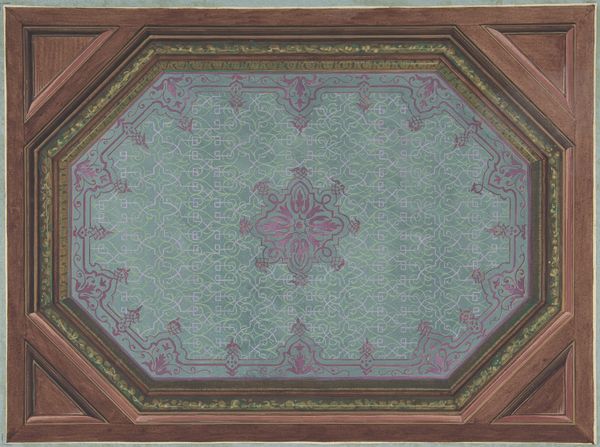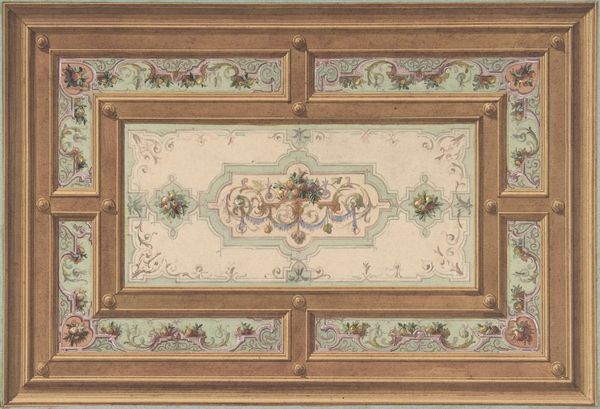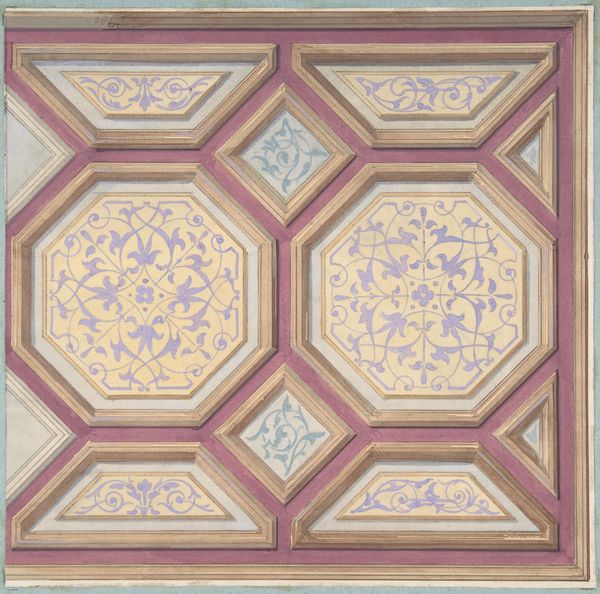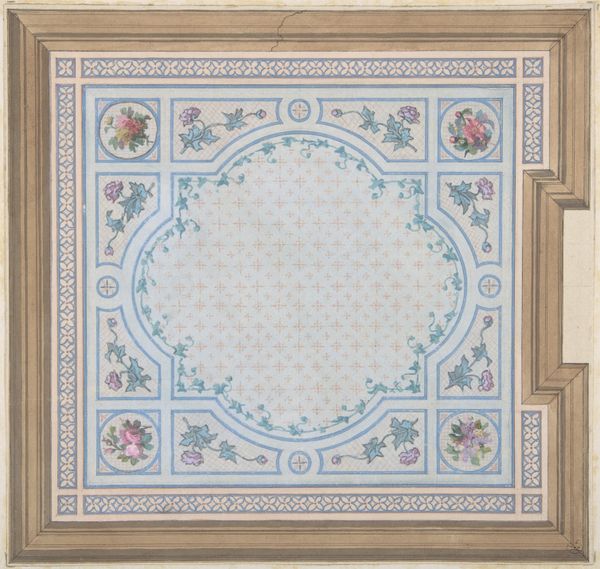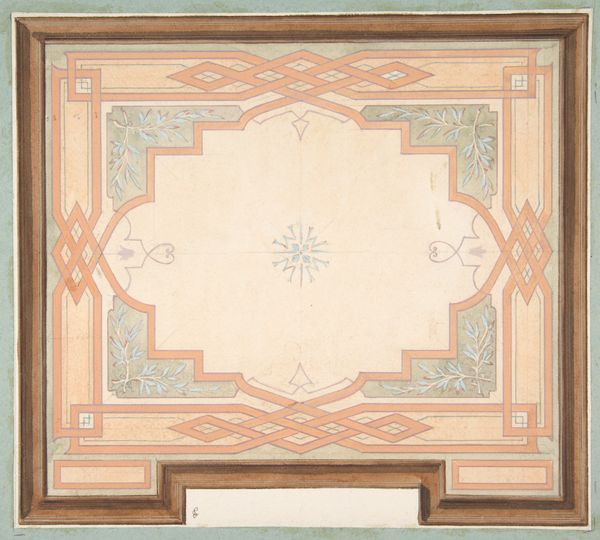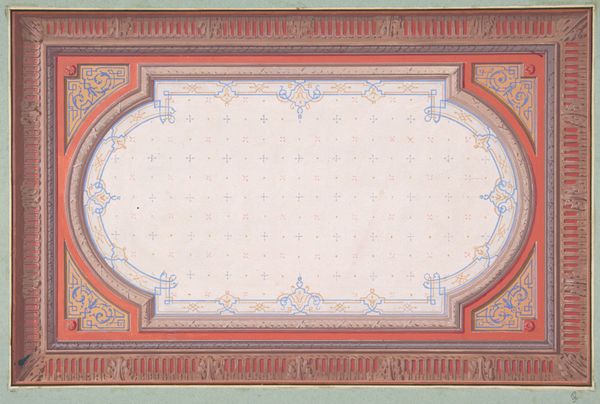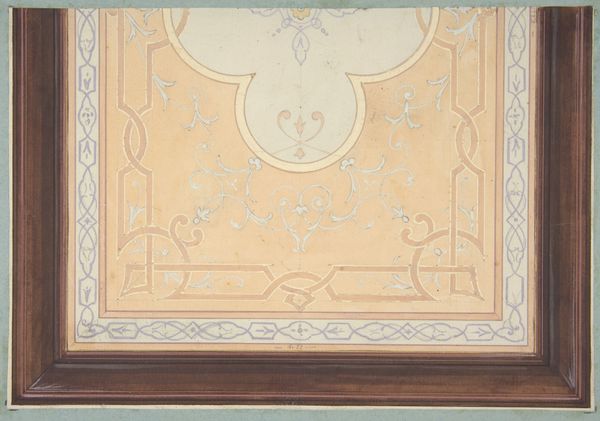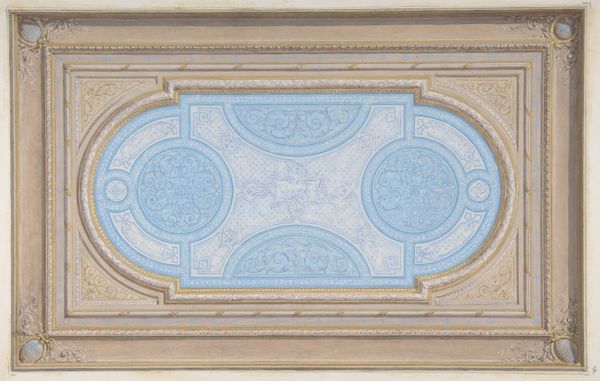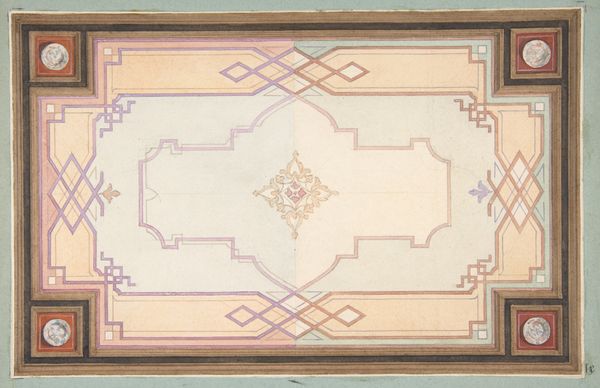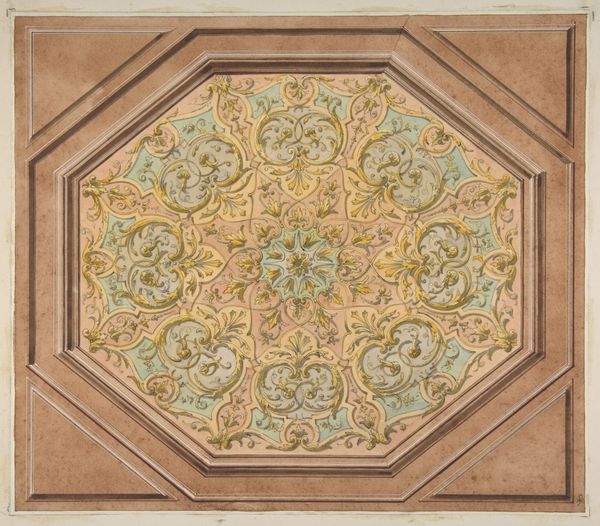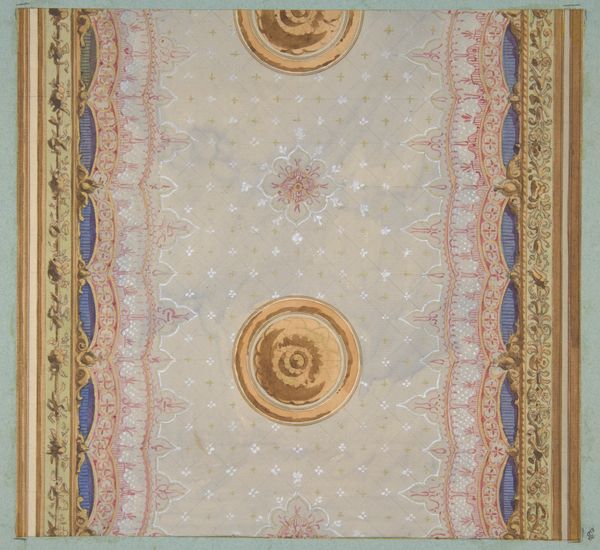
Design for the decoration of a ceiling in rinceaux 1830 - 1897
0:00
0:00
drawing, print, architecture
#
drawing
# print
#
pattern
#
geometric pattern
#
pattern background
#
geometric
#
decorative-art
#
architecture
Dimensions: Overall: 10 7/16 x 14 3/4 in. (26.5 x 37.5 cm) image: 8 5/16 x 10 5/16 in. (21.1 x 26.2 cm)
Copyright: Public Domain
Curator: Let's take a look at this ceiling design attributed to Jules-Edmond-Charles Lachaise, dating from about 1830 to 1897. It's currently held at the Metropolitan Museum of Art. Editor: My first thought is the soothing quality of it, the muted lavender and off-white giving it a serene and almost delicate appearance. It feels incredibly balanced; I’m drawn in by the geometric complexity mixed with those soft floral flourishes. Curator: It reflects the prevailing aesthetic interests of the late 19th century. Interior decoration during this period heavily favored elaborate, classically-inspired ornamentation, particularly among the aristocratic elite who would have commissioned such works. Consider this drawing not merely as aesthetic object, but also as a status symbol. Editor: Absolutely, the intricate rinceaux definitely speaks to the desire for elaborate decoration. Looking at the individual elements, there is great restraint. Notice how each swirl and curve flows organically from one to another; this controlled rhythm, with the central floral pattern anchoring the design, draws the eye around the entire composition. It's a dance of geometric precision and organic growth. Curator: Precisely! The use of these recurring vegetal motifs, while seemingly decorative, would have alluded to notions of refinement, culture, and access to nature, virtues associated with elevated social standing. This drawing served not only as a guide for artisans, but as a powerful signal of cultivated taste for its commissioners. Editor: And the color choices! That almost faded quality of the blues contributes significantly to its impact. These subdued tones work so well at directing focus within the design, while lending an antique air to it all. Curator: It offers insights into the decorative vocabulary of its time and how this imagery shaped perceptions of luxury and class. Editor: And for me, it underscores the sheer pleasure one can find in simple pattern making. What could be better than spending all day creating something that would please the eye from floor to ceiling.
Comments
No comments
Be the first to comment and join the conversation on the ultimate creative platform.
